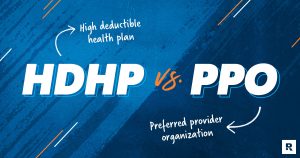In our first foray into tracking stock and bond returns since 1934, we delved into nominal and real returns. Our goal was to determine whether investing in stocks and/or bonds back then would yield higher or lower returns than not investing.
Next, we’ll explore how stock and bond returns are related to each other and to inflation. The stock and bond return correlation (chart below) is quite low, just .073. I’ve included a trend line to guide the eye, but visually it’s difficult to identify any pattern.
This low correlation means that portfolios holding both stocks and bonds enjoy a “diversification benefit”. For example, the expected return of a portfolio divided evenly between stocks and bonds will be the average of expected stock and bond returns. The risk, however, will be lower than the average of stock and bond risk. The return to risk ratio will be higher than for portfolios of stocks or bonds alone, just as a portfolio containing many stocks has an expected return equal to the average expected return for all the stocks, but lower risk than the average risk of all the stocks.
According to the Consumer Price Index (CPI), both stock and bond returns are negatively associated with higher inflation. Purchasing power returns for bonds and stocks were lower when inflation was higher.
Bond returns have an especially strong negative relationship with inflation, with a correlation of -.408. Visually (chart above) the pattern is quite pronounced. The dots cluster around the trend line.
Especially to the extent that inflation is something of a surprise, we would expect real bond returns to decline when inflation rises. Bond interest is fixed in dollar terms. When dollars are worth less, so is bond interest specified in dollars. (Note that we would not expect TIPS real returns to suffer in this way when inflation rates increase – TIPS interest is specified in real terms).
Stocks also have a negative correlation with inflation, at -.229. There is less apparent clustering around the trend line than for bonds.
Some believe that stocks are an inflation hedge. The fact that after-inflation stock returns tended to be lower in times of higher inflation suggests that stock returns (stock price increases and dividends) were somewhat slow to change to keep up with inflation.
For an indication that stocks serve as an effective inflation hedge, we’d be looking for a much stronger and positive relationship, say a correlation well above .5.
The correlation charts also show that both stock and bond returns vary a lot. In these views, it appears that the ranges for stocks and bonds are quite similar, with most quarterly returns between about -30% to plus 20%.
However, histograms (counts of how frequently returns of a given percentage occur in the data) of quarterly returns (stocks above, and bonds below) show that stock returns are much more variable (are riskier!) than bond returns. Bond returns cluster around zero more than stock returns do, and stock returns are more dispersed (very low and very high returns are more frequent) than bond returns are.
How does that play out in the consistency of returns over time?
For bonds, in the first fifty years we are examining, there were extended periods of (small) negative returns (highlighted in the orange ovals below).
During the most recent forty years, twenty-year bond returns were much more favorable, although the five years ending in 2013, and especially the final five years (ending in 2023), disappointed.
Stocks had more consistently positive (and higher) real returns over the ninety years.
Nevertheless, both the ten years ending in 1978 and in 2008 produced negative real returns (orange ovals in graph above).
Both stocks and bonds had positive real returns over the ninety years, but not in every quarter (as the histograms showed), and not even for every five- or ten-year period.
Investors needed patience (sometimes, a lot of patience!) to weather the difficult times of negative returns if they were to enjoy the positive returns that eventually arrived, both for stocks and for bonds.
How can you develop or maintain your patience?
First, understanding your portfolio’s risks and how it might behave allows you to be less surprised and disappointed by the inevitable down-times.
Second, knowing how much risk you can afford can provide you with the confidence you need to maintain your investment policy through times of negative returns. (The risk you can afford refers to how much stock you can hold so that even poor stock market performance won’t threaten your required living standard.)
Successful investing is a long-term activity. Patience is very likely to be rewarded. Unfortunately, as the charts we’ve been looking at reveal, neither stocks nor bonds come with guarantees!
The foregoing content reflects Rick Miller’s opinions and is subject to change at any time without notice. Content provided herein is for informational purposes only and should not be used or construed as investment advice or a recommendation regarding the purchase or sale of any security. There is no guarantee that the statements, opinions, or forecasts provided herein will prove to be correct.
Past performance may not be indicative of future results. Indices are not available for direct investment. Any investor who attempts to mimic the performance of an index would incur fees and expenses which would reduce returns.
Securities investing involves risk, including the potential for loss of principal. There is no assurance that any investment plan or strategy will be successful.
Read the full article here












